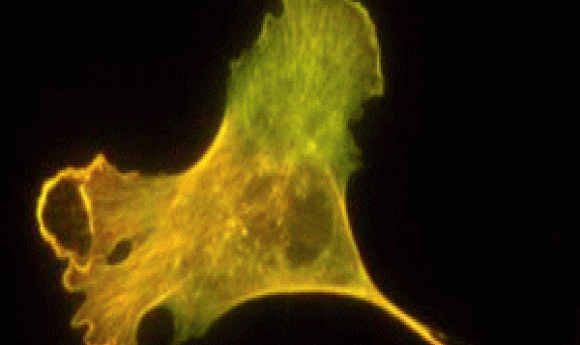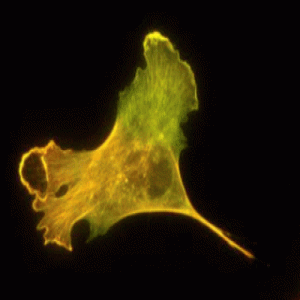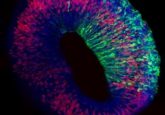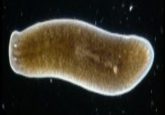The silent code of actin

“Silent” differences in the nucleic acid sequence actually have a big effect on actin.

Actin isoforms play different important roles in the cell.
Image courtesy of Anna Kashina
Actin is one of the most important proteins in the cell, maintaining cellular structure and allowing for intracellular movement. Two of the six isoforms of actin, β-actin and ϒ-actin, are present in every vertebrate cell and have almost identical amino acid sequences, but perform biologically different roles. The question of how such similar proteins can be so functionally distinct has puzzled scientists for decades. Recently, a study led by Anna Kashina at the University of Pennsylvania shed light on this mystery.
“When we first started looking at [these isoforms], no one had any idea how their function could be different,” said Kashina. “We couldn’t find any reason at the amino acid level, and so we examined them on the nucleotide level.” Kashina postulated that the difference was at the level of the so-called “silent code,” the nucleotide differences that didn’t contribute to any amino acid differences.
Kashina’s group used CRISPR/Cas-9 technology to modify the nucleotide sequences of actin. They made changes to the β-actin mRNA sequence such that the amino acid output was the same as ϒ-actin, but the silent nucleotide differences remained.
To their surprise, mice carrying this modified gene didn’t behave like typical β-actin knockouts, which die during development. Instead, these mice survived until adulthood and appeared completely healthy, as if they possessed both the correct isoforms of β-actin and ϒ-actin.
The team next reversed the experiment, making changes to the ϒ-actin mRNA so that it retained its silent differences while producing the same amino acid output as β-actin. Once again, these mice survived and appeared healthy.
Kashina made another striking observation—the density of ribosomes translating each type of isoform differed drastically. In fact, the ribosome density was more than a thousand times greater on β-actin compared to ϒ-actin. Although this remains to be tested, Kashina believes that the ribosome density may have to do with how the silent code is interpreted by the cell.
“I think in many ways, people are going to be surprised by this result,” said Peter Gunning from the University of New South Wales, who was not involved in the study. “At a pinch, the mouse can deal with making just one of the two proteins, but what it does need is information in the genes beyond just the specific protein isoform.” Gunning added that further investigation into how ribosome density plays into the picture would be illuminating.
In the future, Kashina would like to study how the silent code concept may apply to proteins other than actin. For instance, tubulin is another cytoskeletal protein with isoforms performing different functions. “We believe that many homologous proteins with diverse biological functions are regulated largely or exclusively by their nucleotide rather than amino acid sequences,” said Kashina.





